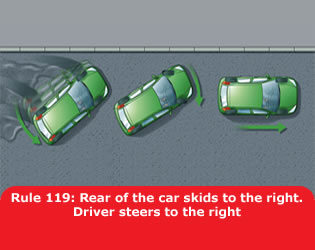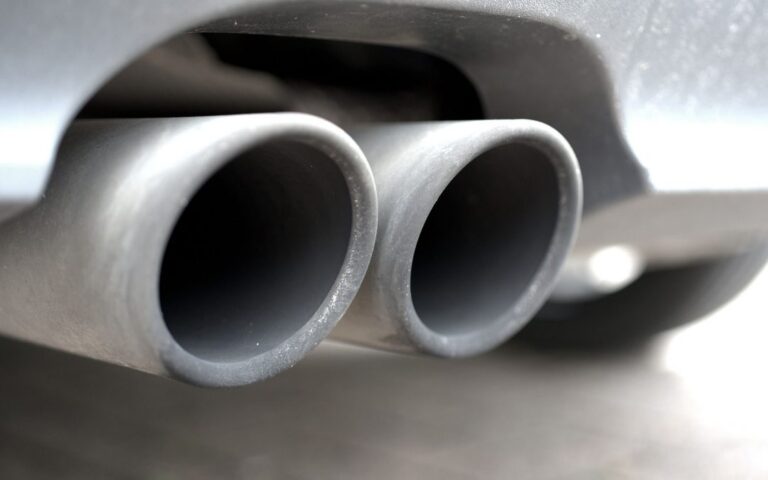How to Regain Control of a Vehicle in a Skid
To regain control of a skidding vehicle, steer gently in the direction of the skid. Avoid sudden movements.
Picture yourself driving down the road, lost in thought. Suddenly, your vehicle hits a patch of ice, causing it to skid out of control. Panic sets in as you feel the loss of traction, and the car swerves unpredictably. In this split-second moment, knowing how to respond can mean the difference between a near miss and a serious accident.
By understanding the basics of regaining control in a skid, you can navigate through hazardous situations with confidence and safety. Let’s explore some valuable tips and techniques to help you stay in control when faced with a skid on the road.

Credit: patch.com
Causes Of Skidding
Sudden loss of vehicle control due to skidding can be a terrifying experience for any driver. Understanding the causes of skidding is crucial in learning how to effectively regain control of a vehicle in such a situation.
Tire Grip And Surface Conditions
Tire grip plays a critical role in maintaining traction and preventing skidding. Tire tread depth, tire pressure, and tire type can all influence the grip. Additionally, surface conditions such as wet or icy roads can significantly affect the ability of tires to grip the surface, increasing the likelihood of skidding. To avoid skidding, it’s important to ensure that tires are properly inflated, have sufficient tread depth, and are appropriate for the current driving conditions.
Speed And Inertia
The relationship between vehicle speed and inertia has a direct impact on the likelihood of skidding. When driving at higher speeds, the vehicle’s momentum and inertia increase, making it more challenging to maintain control, especially when making sudden maneuvers. Reducing speed can help minimize the risk of skidding and enable better control of the vehicle, particularly in adverse weather or road conditions.

Credit: mocktheorytest.com
Identifying A Skid
Identifying a Skid:
Oversteer Skid
An oversteer skid occurs when the rear wheels lose traction and the vehicle starts to fishtail.
Understeer Skid
An understeer skid happens when the front wheels lose traction, causing the vehicle to go straight even when steering.
Reacting To A Skid
When faced with a skid, reacting swiftly and calmly can be the key to regaining control of your vehicle. Here are some essential steps to follow:
Stay Calm And Focused
Remain composed and focus on regaining control of the vehicle.
Release The Accelerator
Lift off the gas pedal to reduce speed and regain traction.
Steer Into The Skid
Turn the wheel in the direction of the skid to align the vehicle with the road.
Recovering From A Skid
Skidding can be a terrifying experience for any driver. However, with the right knowledge and quick thinking, it is possible to regain control of your vehicle and recover from a skid. Knowing how to regain traction and correct your steering can make all the difference in a potentially dangerous situation.
Regain Traction
To regain traction while in a skid, it is crucial to avoid hitting the brakes forcefully. Instead, gently lift your foot off the accelerator and focus on steering in the direction you want to go. This action can help the tires regain traction and regain control of your vehicle.
Correct Steering
When correcting steering during a skid, it is important to turn the steering wheel in the direction you want the front of the car to go. Avoid oversteering or making sudden movements, as this can worsen the skid. Gradually and smoothly steer the vehicle back onto the intended path. “`
Preventing Skids
Regain control of your vehicle during a skid with these essential tips. Learn how to prevent skids and maintain safety on the road.
Maintain Proper Tire Pressure
Proper tire pressure is crucial when it comes to preventing skids. Make sure to regularly check your tire pressure to ensure it is at the recommended level. Underinflated tires reduce traction and can make your vehicle more prone to skidding. On the other hand, overinflated tires reduce the contact area between the tire and the road surface, making it difficult to control your vehicle in hazardous conditions. Keep in mind that tire pressure can change with temperature fluctuations, so it’s important to check it regularly.Slow Down In Hazardous Conditions
When faced with hazardous conditions, slowing down is one of the most effective ways to prevent skids. Driving at a reduced speed gives you more time to react to unexpected situations and helps maintain better control of your vehicle. Wet or icy roads, as well as sharp curves, require extra caution. It’s important to adjust your speed accordingly to avoid losing control. Remember, it’s better to arrive at your destination a few minutes late than to risk a dangerous skid. Additionally, always keep a safe distance between your vehicle and the one ahead of you. This allows for sufficient braking distance, giving you more time to respond to an emergency situation without skidding. Defensive driving techniques such as maintaining a safe following distance can greatly reduce the risk of skids. To summarize, maintaining proper tire pressure and slowing down in hazardous conditions are two essential measures to prevent skids. By being proactive and taking these precautions, you can regain control of your vehicle and avoid potentially dangerous situations. Remember, skids are often a result of insufficient grip on the road, and these preventive steps can significantly improve your driving safety. Stay aware and drive cautiously!
Credit: www.insurancenavy.com
Frequently Asked Questions On How To Regain Control Of A Vehicle In A Skid
How Do You Regain Control Of A Vehicle In A Fish Tail Skid?
To regain control of a vehicle in a fishtail skid, steer in the direction of the skid. Ease off the accelerator and avoid slamming on the brakes. Once the car straightens, gently steer back to your desired course. Remember to stay calm while regaining control.
How Do You Regain Control When Your Car Goes Into A Skid?
To regain control when your car skids, steer in the direction of the skid to straighten the wheels. Avoid sudden movements and gently apply the brakes to slow down. Practice skid control techniques in a safe, empty parking lot to improve your skills.
How Do You Recover From A Cornering Skid?
To recover from a cornering skid, ease off the gas, gently steer in the direction you want to go, then slowly accelerate back on track.
How Do I Control My Car When Skidding?
To control your car during a skid, steer in the direction you want to go, avoid hitting the brakes, and stay calm. If you have anti-lock brakes, apply steady pressure. For cars without anti-lock brakes, pump the brakes gently. Practice skid control in a safe environment to improve your skills.
How Can You Regain Control Of A Skidding Vehicle?
To regain control of a skidding vehicle, stay calm, ease off the accelerator, and gently steer into the direction of the skid.
What Should You Avoid Doing When Your Vehicle Starts To Skid?
When your vehicle starts to skid, avoid slamming on the brakes or abruptly turning the steering wheel as it can worsen the skid.
What Is The Best Technique To Control A Rear-wheel Skid?
When your rear-wheel skids, gradually steer into the skid and aim the front wheels in the direction you want to go.
Conclusion
In an unfortunate skidding situation, remain calm and follow these practical steps to regain control. Keep your eyes focused on the road and steer in the direction of the skid. Remember, gently apply the brakes and never overcorrect. With these techniques, you can confidently navigate through a skid and steer towards safety.


